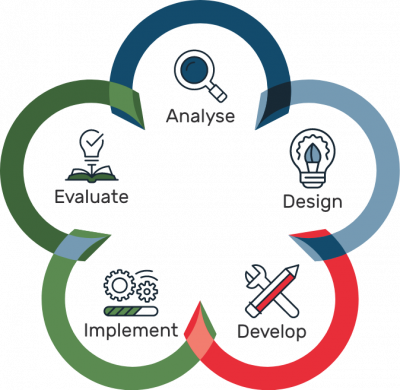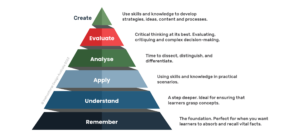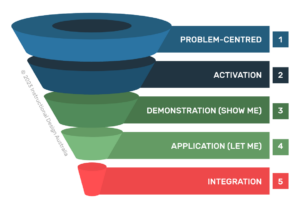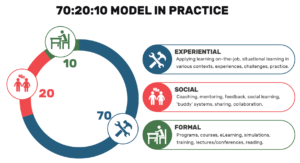How to Design Effective Microlearning Experiences for Adult Learners
FREE download
Complete the form to download a quick reference guide (QRG) for designing effective microlearning experiences.
In the fast-paced world we live in, traditional long-form learning experiences may not always align with the demands of busy adult learners. That’s where microlearning comes in. Microlearning involves delivering bite-sized, focused learning content in short modules or activities. This article explores the benefits of microlearning for adult learners and provides insights into designing effective microlearning experiences that maximise retention.
Benefits of Microlearning for Adult Learners
Time Efficiency
Adult learners often have limited time available for learning. Microlearning offers concise and targeted content that can be consumed in short bursts, allowing learners to fit learning into their busy schedules (Morris & Doyle, 2021).Flexibility
Microlearning provides flexibility in accessing learning materials. Learners can access microlearning modules anytime and anywhere, using various devices such as smartphones, tablets or laptops, making it convenient for on-the-go learning (Hug, 2019).Improved Retention
The focused and concise nature of microlearning enhances information retention. Learners can concentrate on one specific topic or skill at a time, leading to better comprehension and recall (Malamed, 2015).Engaging and Interactive
Microlearning can be designed to be highly interactive and engaging, incorporating multimedia elements, quizzes, simulations or gamification. These features promote learner engagement and motivation, increasing the effectiveness of the learning experience (Fink, 2018).Just-in-Time Learning
Microlearning is ideal for providing “just-in-time” learning when learners need specific information or skills. Learners can quickly access relevant microlearning modules to address immediate challenges or fill knowledge gaps (Molenda, 2018).Designing Effective Microlearning Experiences
Set Clear Learning Objectives
Define clear and specific learning objectives for each microlearning module. Clear objectives guide the design process and help learners understand the intended outcomes of the learning experience (Pappas, 2021).Chunk Information
Break down content into small, digestible chunks. Each microlearning module should focus on one concept or skill, making it easier for learners to process and retain information (Educause, 2021).Utilise Multimedia
Incorporate multimedia elements such as videos, images, infographics, or audio to enhance engagement and comprehension. Visual and auditory aids can help convey information more effectively (Yan, 2015).Interactive Assessments
Include interactive assessments, quizzes or activities to reinforce learning and assess understanding. Immediate feedback can be provided to learners, reinforcing correct knowledge and addressing misconceptions (Quinn, 2018).Gamification Elements
Consider incorporating gamification elements, such as badges, points or leaderboards, to increase learner motivation and create a sense of achievement. Gamification can add an element of fun and competition to the microlearning experience (Kapp, 2012).Mobile-Friendly Design
Ensure that microlearning modules are designed to be mobile-friendly and accessible across various devices. This allows learners to engage with the content on their preferred devices, making learning more convenient (Russell, 2020).Practical Application
Include real-life scenarios, case studies, or examples that demonstrate the practical application of the concepts being taught. Adult learners appreciate learning content that is directly relevant to their work or personal lives (Bruck, Motiwalla, & Foong, 2017).Reinforcement and Spaced Learning
Incorporate spaced learning techniques by providing periodic reinforcement of key concepts. Learners can review previously covered material through spaced repetition, enhancing long-term retention (Thalheimer, 2020).Social Learning Opportunities
Integrate social learning elements such as discussion forums, group activities, or collaborative projects. Adult learners benefit from the opportunity to engage with peers, share insights and learn from collective experiences (Andresen, 2009).Analytics and Iterative Improvement
Use learning analytics to track learner progress, engagement and completion rates. Analyse the data to identify areas for improvement and make iterative adjustments to the microlearning content and design (Kaufman, 2020). In conclusion, microlearning offers numerous benefits for adult learners, including time efficiency, improved retention, flexibility and engagement. By following best practices in designing microlearning experiences, such as setting clear objectives, chunking information, utilising multimedia and incorporating interactive assessments, instructional designers can create effective microlearning modules that cater to the unique needs of adult learners. With the right design, microlearning can be a powerful tool for providing on-demand, engaging and impactful learning experiences.References:
Andresen, M. A. (2009). Asynchronous Discussion Forums: Success Factors, Outcomes, Assessments, and Limitations. Educational Technology & Society, 12(1), 249-257. Bruck, P. A., Motiwalla, L. F., & Foong, S. (2017). Adult Learners’ Perceptions of Online Learning: A Comparison of Working Professionals and Full-Time Students. Journal of Education for Business, 92(8), 366-373. Educause. (2021). 7 Things You Should Know About Microlearning. Retrieved from https://library.educause.edu/-/media/files/library/2021/2/eli7192-pdf.pdf Fink, D. (2018). Microlearning: Why All the Hype? Journal of Applied Learning Technology, 8(3), 20-28. Hug, T. (2019). Microlearning: A Didactic Perspective. Journal of Applied Learning Technology, 9(1), 8-18. Kapp, K. M. (2012). The Gamification of Learning and Instruction: Game-Based Methods and Strategies for Training and Education. Wiley. Kaufman, D. (2020). Learning Analytics: Definitions, Processes, and Potential. In B. G. Siemens, D. Gasevic, & C. Dawson (Eds.), Learning Analytics: Fundamentals, Applications, and Trends (pp. 1-15). Springer. Malamed, C. (2015). Microlearning: The Misunderstood Buzzword in E-Learning. Retrieved from https://theelearningcoach.com/elearning2-0/microlearning-overview/ Molenda, M. (2018). Microlearning. In J. M. Spector (Ed.), The SAGE Encyclopedia of Educational Technology (pp. 550-553). Sage Publications. Morris, L. V., & Doyle, A. (2021). Microlearning in Organizations: Research on Design, Implementation, and Evaluation. In N. C. Roberts (Ed.), The Handbook of Human Resource Development (pp. 240-264). Wiley. Pappas, C. (2021). The Ultimate Guide to Microlearning: What It Is and How to Use It for Employee Training. Retrieved from https://elearningindustry.com/microlearning-ultimate-guide-definition-examples-and-resources Quinn, C. (2018). Designing mLearning: Tapping Into the Mobile Revolution for Organizational Performance. John Wiley & Sons. Russell, K. (2020). Designing Mobile-Friendly eLearning: What You Need to Know. Retrieved from https://www.shiftelearning.com/blog/designing-mobile-friendly-elearning-what-you-need-to-know Thalheimer, W. (2020). Spaced Learning: An Overview. Retrieved from https://www.worklearning.com/2020/04/03/spaced-learning-an-overview/ Yan, Z. (2015). Microlearning: Emerging Concepts, Practices, and Technologies After e-Learning. Journal of Educational Technology Development and Exchange, 8(1), 37-54.Related articles:
There’s more where that came from!
Instructional Design PLUS Course

Enjoyed our instructional design blog? Dive deeper with our Instructional Design PLUS Course!
Gain full access to our comprehensive ADDIE Toolkit, a collection of guides and templates tailored for each stage of the ADDIE Model, the renowned framework to complete an end-to-end instructional design project.
Whether you’re contemplating a new career path or enhancing your existing skill set, this course is your key to excelling in the ever-evolving world of instructional design.
Embrace the opportunity to transform knowledge into practical expertise.
Other articles



Bloom’s Taxonomy: A Guide for Creating Effective Learning Outcomes
Merrill’s Instructional Design Principles
The 70:20:10 Learning Model
